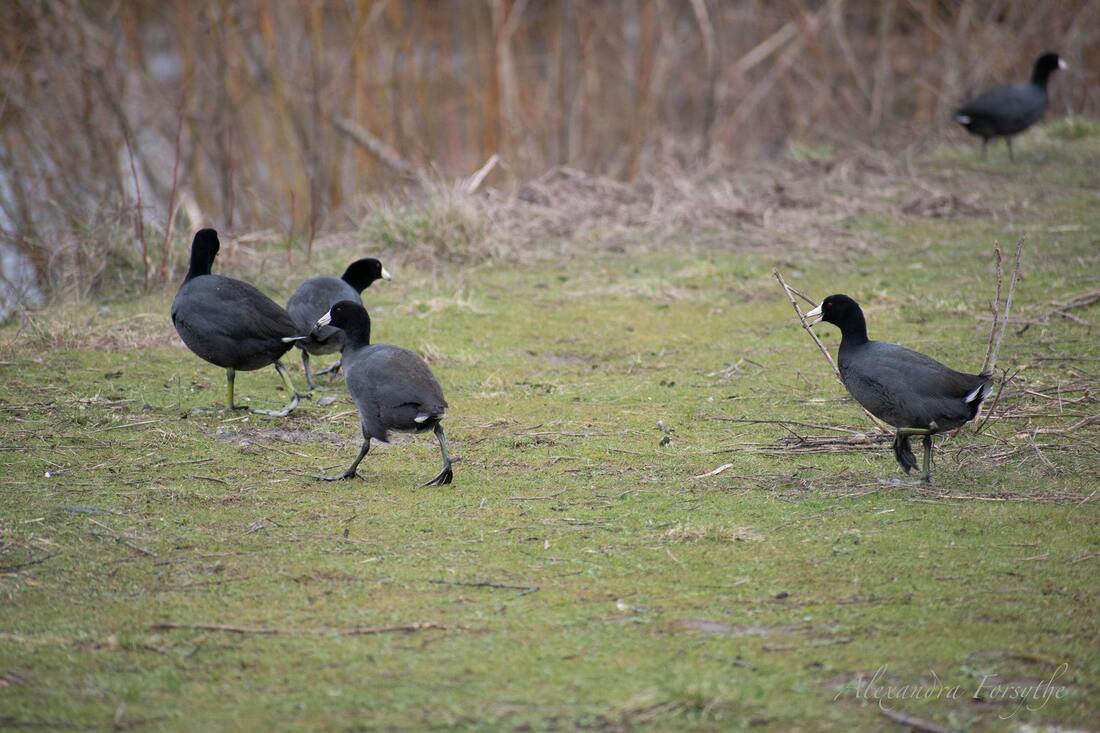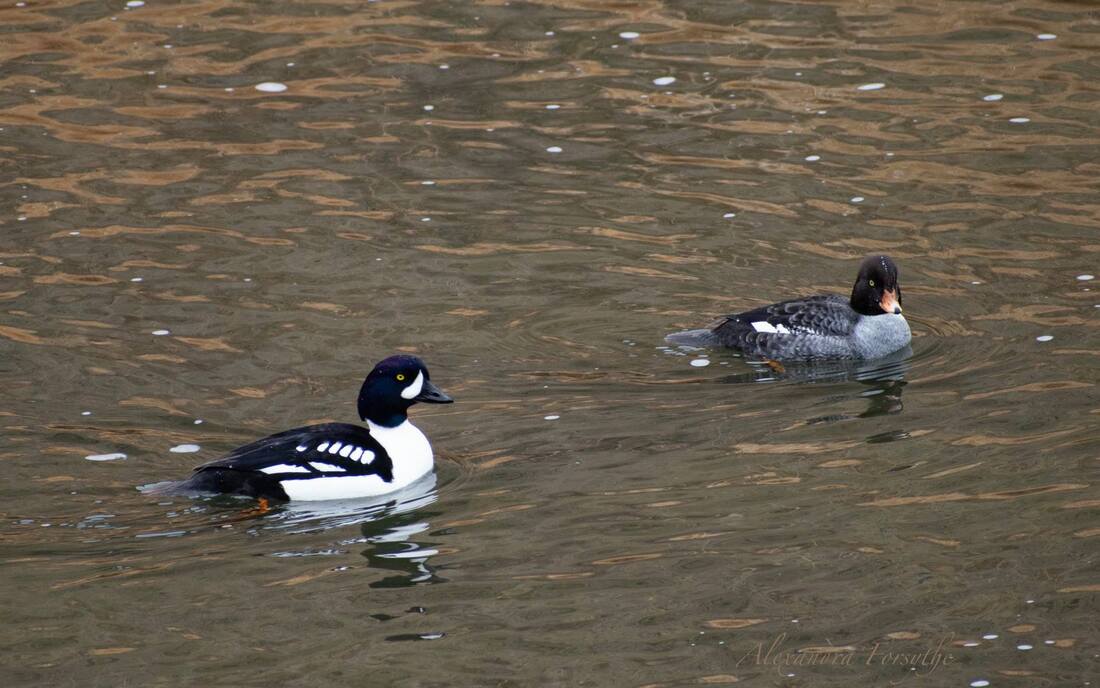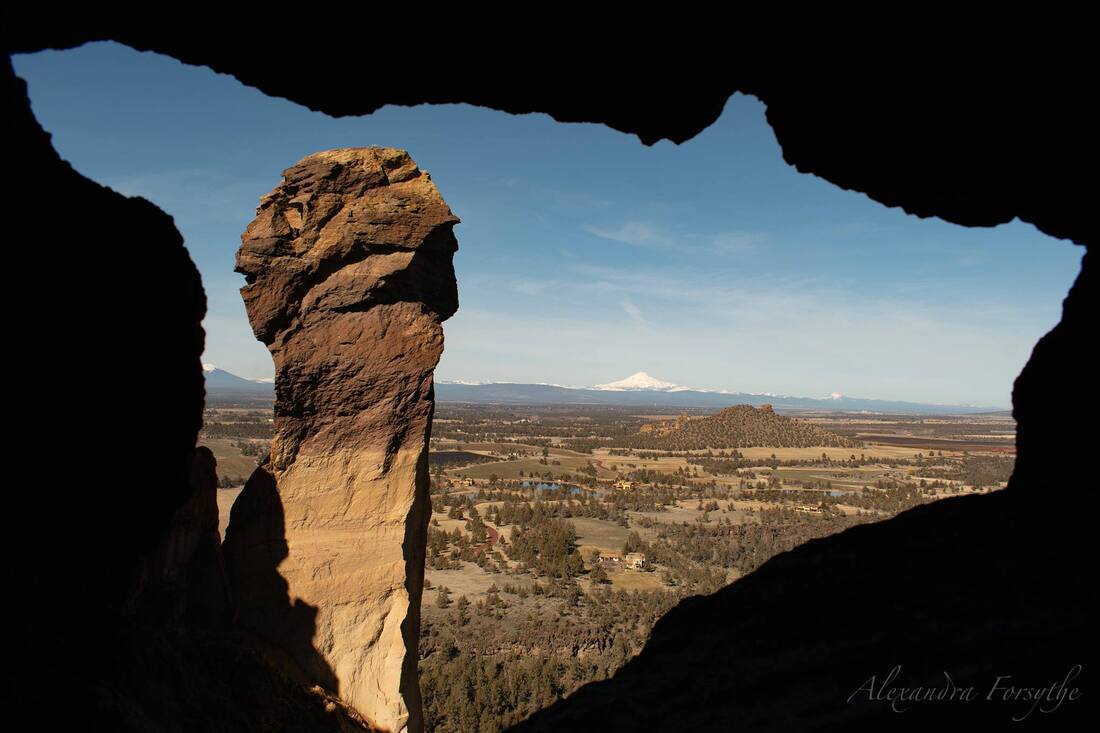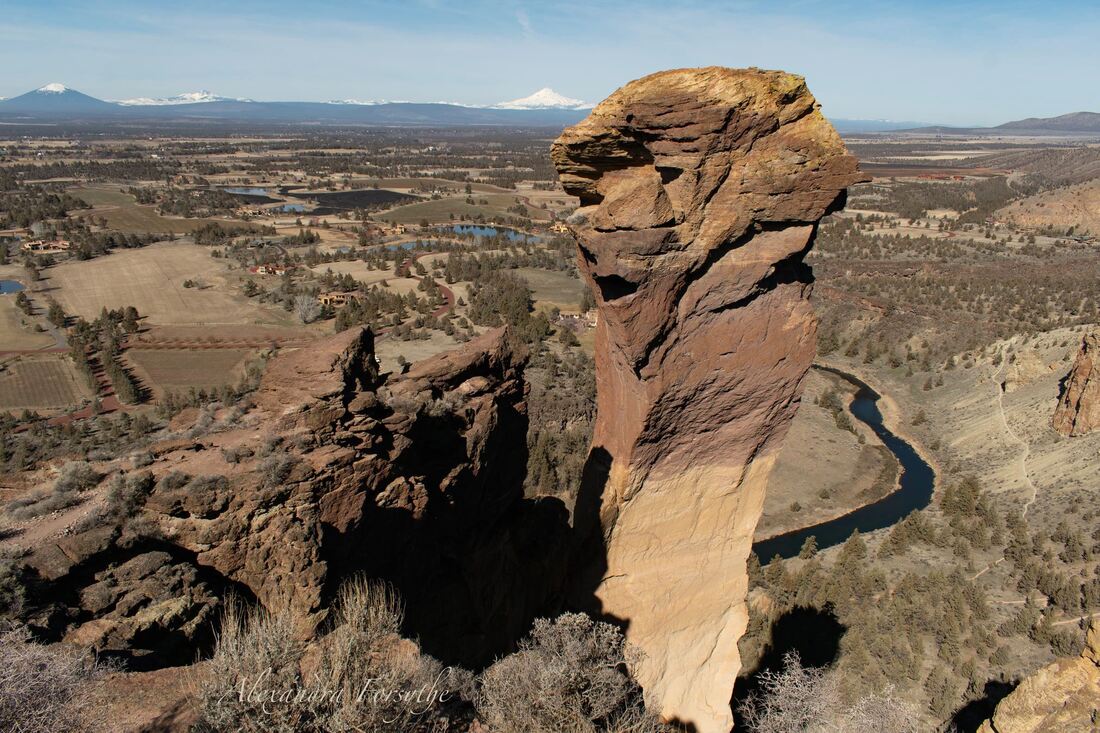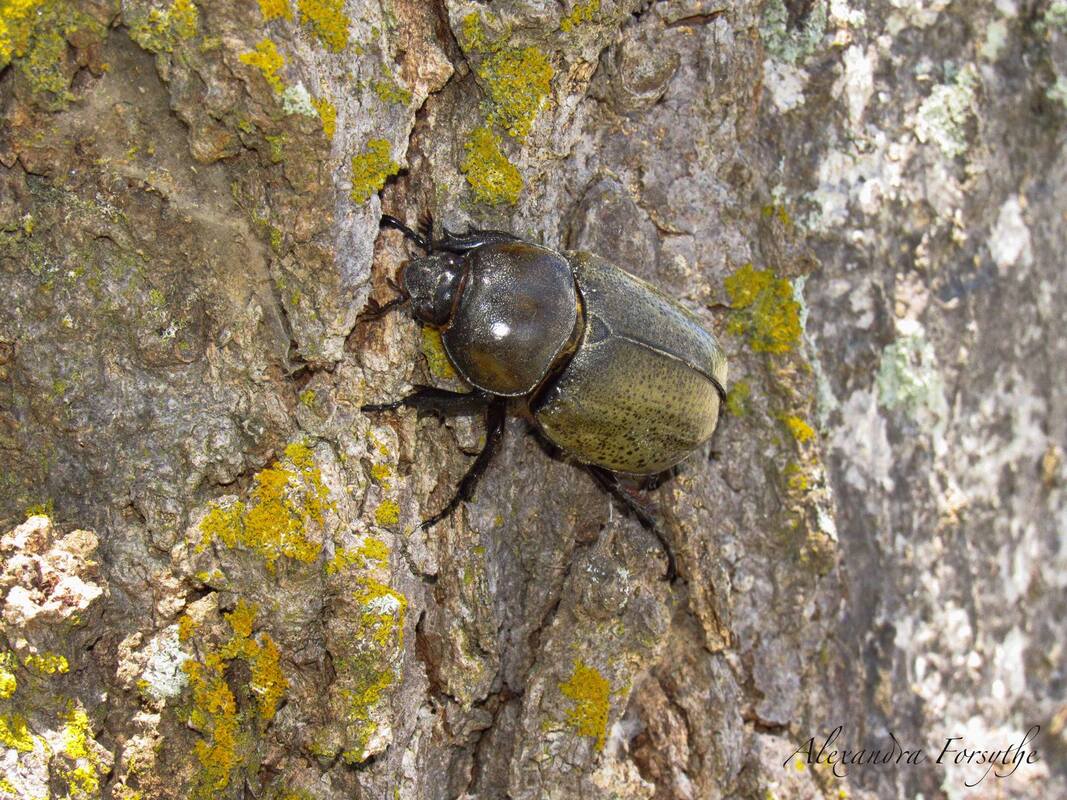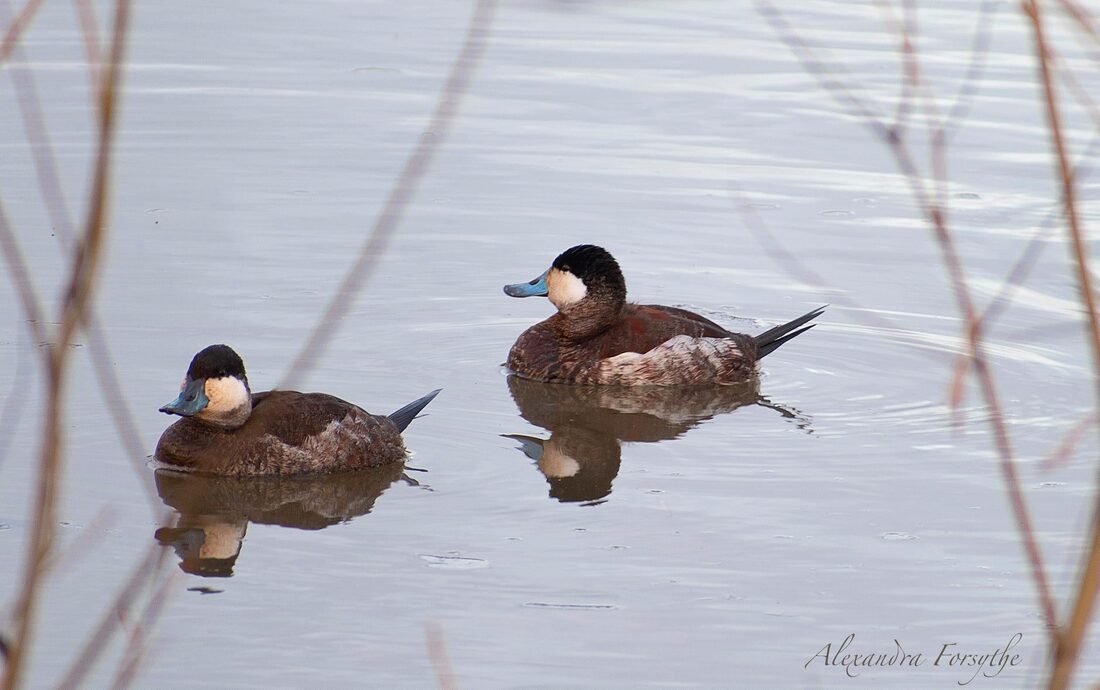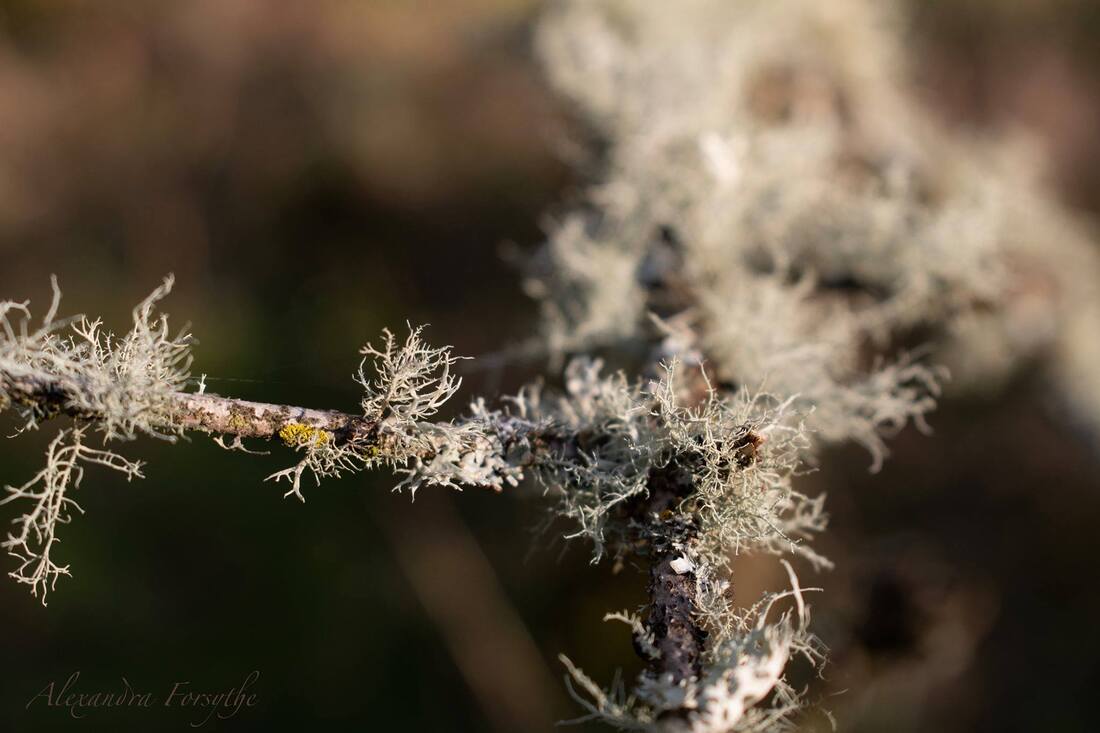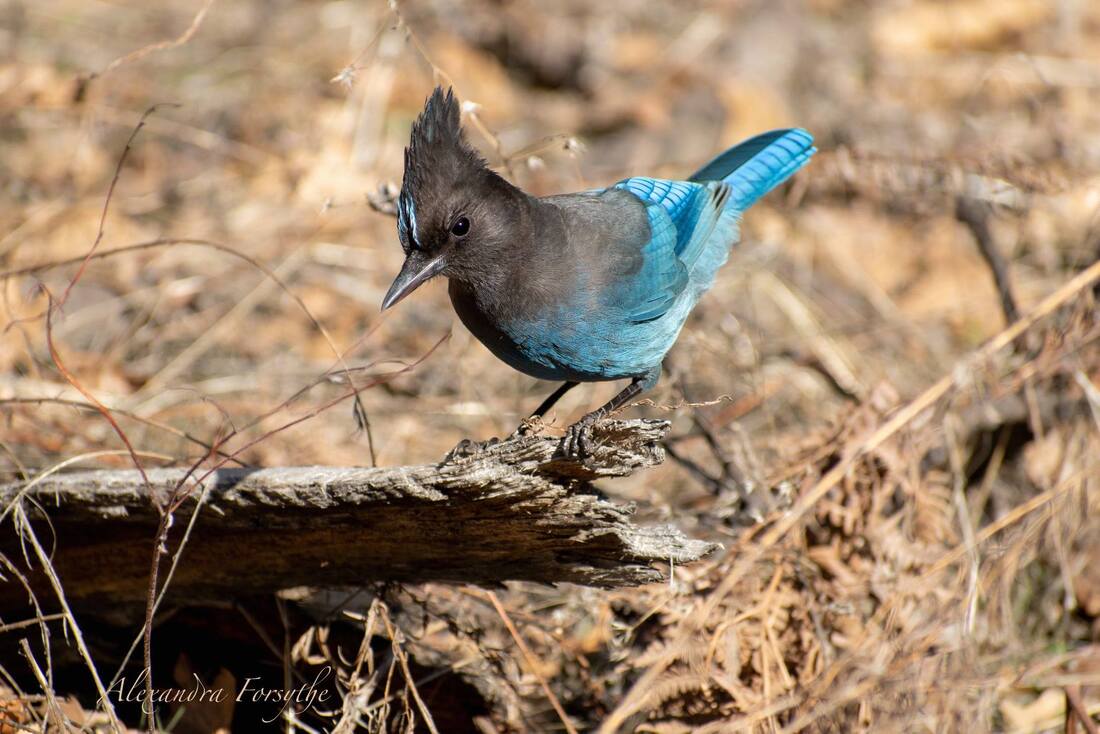|
Birdathons are a great way to help out and I highly recommend them! Typically, a birdathon is used as a fundraiser for a state or local Audubon, state park, or similar organization. As the participant, you pledge to go out on a certain day and spot as many species of birds as you can. Your friends and family agree to sponsor you, either by pledging a fixed amount, or by pledging an amount per species of bird (for example, a dollar per species). You don't have to be an expert birder, and there is no contest; everyone is there working as a team to help the organization raise money for its educational programs and nature preserves. You'll meet some very nice people, learn a lot, and have a ton of fun in the process!
It's always exciting when I get to see a new species! I got a lot of exercise following this beauty, and it only landed for a brief moment. It's not an ideal photo, but I'm thrilled anyway because it's a "lifer" (a species I've never seen before). Plus, it's a gratulata which is Latin for joy or gratitude, and that's certainly what I felt when I spotted it.
Meet the Mesoleuca gratulata, commonly known as the "Western White-ribboned Carpet Moth" or the "Half-white Carpet Moth". This western moth is also known as #7308. No, that's not a Borg species designation. The #7308 is the Hodges or MONA (Moths of North America) number. There are over 12,000 species of moths in North America, and they are listed in a numbering system that was introduced by Ronald Hodges in 1983. The system attempts to group the moths according to family, but parts of the list are outdated so it is constantly undergoing revision as new species and facts are uncovered. And now to answer the questions I know you're all dying to ask: 1) Which moth is #1 on the Hodges list? The Epimartyria auricrinella (Goldcap Moss-eater Moth). With a name like that, it deserves the top spot. 2) What is the Borg designation for humans? Humans are species 5618 to the Borg. We're way down on the list, far below the Ferengi, Talaxians, Kazon, and Vulcans. To my fellow geeks and Star Trek nerds: you're welcome. 😎 Have a day filled with gratulata and try not to get assimilated. Cute Coots! Have you ever really studied American Coots? They're a comical little waterfowl and I love them!
Let's start with their behavior. They always seem to be delighted, gleefully darting around in the water as if they just learned to swim, and they couldn't be more excited about their newfound abilities. Next, take a look at their feet. They're huge! And green! And the toes are freakishly long. The feet are not webbed like a duck's foot, but each toe has big flaps of skin that help propel it through the water. Those flaps fold up when the Coot is on land so it can move more quickly on land than a duck can. They have a white bill that goes up to the forehead, turns dark reddish near the top of the head, but it's banded in charcoal at the tip. Those round, red eyes would look menacing if it weren't for the friendly nature of the bird. They can be found across much of the U.S. (depending on the season), often mixed in with other waterfowl. In the water, just look for a floating, black bowling ball with a bright, white bill. On land, look for a black chicken that's using enormous, green feet that it borrowed from a heron. Need a smile? Go find a Coot and watch its antics for a little while! The name of this bird sounds like the title of a James Bond film: Barrow's Goldeneye. They even look suave and sophisticated, sporting a dashing black and white tuxedo.
These handsome ducks are mostly seen in the Northwest, nesting in trees adjacent to freshwater lakes and ponds during breeding season, or during other seasons in sheltered saltwater or freshwater areas. They dine on small fish and aquatic invertebrates like crayfish, and on the larvae of dragonfly, mayfly, caddisfly, water boatmen and other insects. The origin for the "Goldeneye" part of the name is obvious. The "Barrow" portion is in honor of Sir John Barrow - geographer, writer, and Second Secretary to the Admiralty in the 1800's who mapped the interior of South Africa, promoted discovery missions to the Arctic and the search for a "North-West Passage", and wrote "The Mutiny on the Bounty". Barrow Point in Alaska is also named for him. For those of you familiar with the Common Goldeneye, the Barrow's looks similar to the Common, but the white patch around the bill is a crescent, not circular, and the forehead is more blunt. The wings are mostly black with thick white bars, rather than fine streaks, and the sides have more black than white. I found this pair at Smith Rock State Park in Oregon. Disappointingly, the ducks' British accent was lacking, and there's no sign of the signature Bond car. Can you guess why this 350-ft spire is called "Monkey Face"? If you look closely, you'll see two eyes, a nose, and a mouth.
This rock formation is a result of volcanic activity and erosion, and it is a rock climber's dream and nightmare. The pillar bulges out on all sides creating challenging overhangs. The first known ascent was in 1960 by Vivian Staender and her two climbing partners: Jim Fraser and Dave Bohn. The trio also came up with the name "Misery Ridge" - a name that is applied today to one of the most popular trails in the area. Smith Rock State Park sits on the corner of the Crooked River Caldera. About 30-million years ago, the largest volcanic eruption to have ever occurred entirely within Oregon's borders happened here. The rock over the lava chamber collapsed, creating a 230-square mile depression. The event created Smith Rock tuff, then nearby volcanoes covered the tuff with basalt lava. The path of the Crooked River was blocked by lava, so the river formed a new channel. Around the perimeter of the caldera, rhyolite bodies intruded along the ring fractures. Monkey Face and many of the other rock formations in Smith Rock have been carved by wind and erosion out of welded tuff and rhyolite. If you look closely at Monkey Face, you'll see that the head is more reddish than the rest of the spire. The head is welded tuff. The rest of the spire is non-welded tuff. Welded tuff is hardened ash which occurs when the materials spewing from the volcano are so hot that they weld together on impact or compaction. It's a very cool area to explore, and it's easy to see why this is one of Oregon's Seven Wonders! “I’m a damsel, I’m in distress, I can handle this. Have a nice day.” — Megara in "Hercules"
This is a female Hercules Beetle that I encountered while living on the East Coast. I also had a male Hercules as a pet for over a year. He was part of an insect show, and at the end of the show they were going to destroy all of the insects. You know I couldn't let that happen! I brought Herky and several other members of that show home with me. Yes, I named the Hercules Beetle "Herky". No, it wasn't very imaginative. I'm open to suggestions, in case I ever adopt another one. The massive Hercules is one of the largest insects in the United States. Named after Hercules in Roman mythology, it is quite strong. The males have two horn-like pincers, leading to the Rhinoceros Beetle moniker. They can be found in hardwood forests in the eastern U.S. where they dine on sap. They may look scary, but they're completely harmless (unless you're a tree filled with sap, or a sap). 😆 Water puppy! Pacific Harbor Seals look and act like a cross between an otter and a Dalmatian puppy.
These playful creatures have a spotted coat that can range from silver to dark brown, ear holes (no external ear flaps), and small rear flippers. Males are larger than females; a large male can weigh up to 300 pounds. They have short front flippers that enable them to "galumph" or belly-flop across land, but they move much easier in the water. They can dive 1400 feet and stay submerged for up to 40 minutes while searching for sole, flounder, cod, herring, squid, crustaceans, and other foods, and their nostrils can remain closed while they're submerged. There are approximately 500,000 Pacific Harbor Seals worldwide, and they can be found on both U.S. coasts. Along the Pacific Coast they can be seen from Alaska to Mexico, and there are 32 sites along the Oregon coast where they can be reliably found. They can be hard to spot when they're in the water. Look for something that appears to be a tabloid photo of the Loch Ness Monster. When they're not in the water, you can find them on rocky islands, sandy beaches, and mudflats, often resting in a C-shaped position with their head and their rear flippers curved upward. Just look for a large silver or brown banana sunning itself. 😄 A mother seal will occasionally leave her pup for several hours while feeding, and well-meaning people will assume the pup has been abandoned. It is important to leave the pup alone and to keep your distance. Do not move the pup, put it in the water, or cover it up. Instead, just leave the area so the mother will feel it's safe to return. The tiny world of moss and lichens is full of life! “One gram of moss from the forest floor, a piece about the size of a muffin, would harbour 150,000 protozoa, 132,000 tardigrades, 3,000 springtails, 800 rotifers, 500 nematodes, 400 mites, and 200 fly larvae. These numbers tell us something about the astounding quantity of life in a handful of moss.”
― Robin Wall Kimmerer Steller's Jays are so colorful, not only in plumage but also in character. These western birds are known for their incessant demands for attention, and for appearing to be underfed. They strut across campsites and picnic tables, looking stern, fabulous, and famished. In some ways, they remind me of runway models, so let's go with a description inspired by the fashion industry.
The Stellar's Jay is sporting a bold color-block of cerulean and slate, punctuated with eye-catching stripes, geometric patterns, and diaphanous accents. The headdress lends to a dramatic silhouette, giving a look that is fierce and powerful. The dainty ice-blue lines on the accoutrement give an illusion of illumination, elevating the crest to high-fashion status and adding an air of sophistication. The aesthetic is equal parts joyful and gritty glamour - sleek and subtle with just a hint of drama. This classic but truly chic bird is guaranteed to be disruptive at all of the campsites and picnic areas this year, but there are no plans to appear on the catwalks (or anything involving cats). Be fabulous, darlings! 💕 (Side note: the coloration of the Steller's varies somewhat, depending on the population and range) |
Archives
April 2021
|



